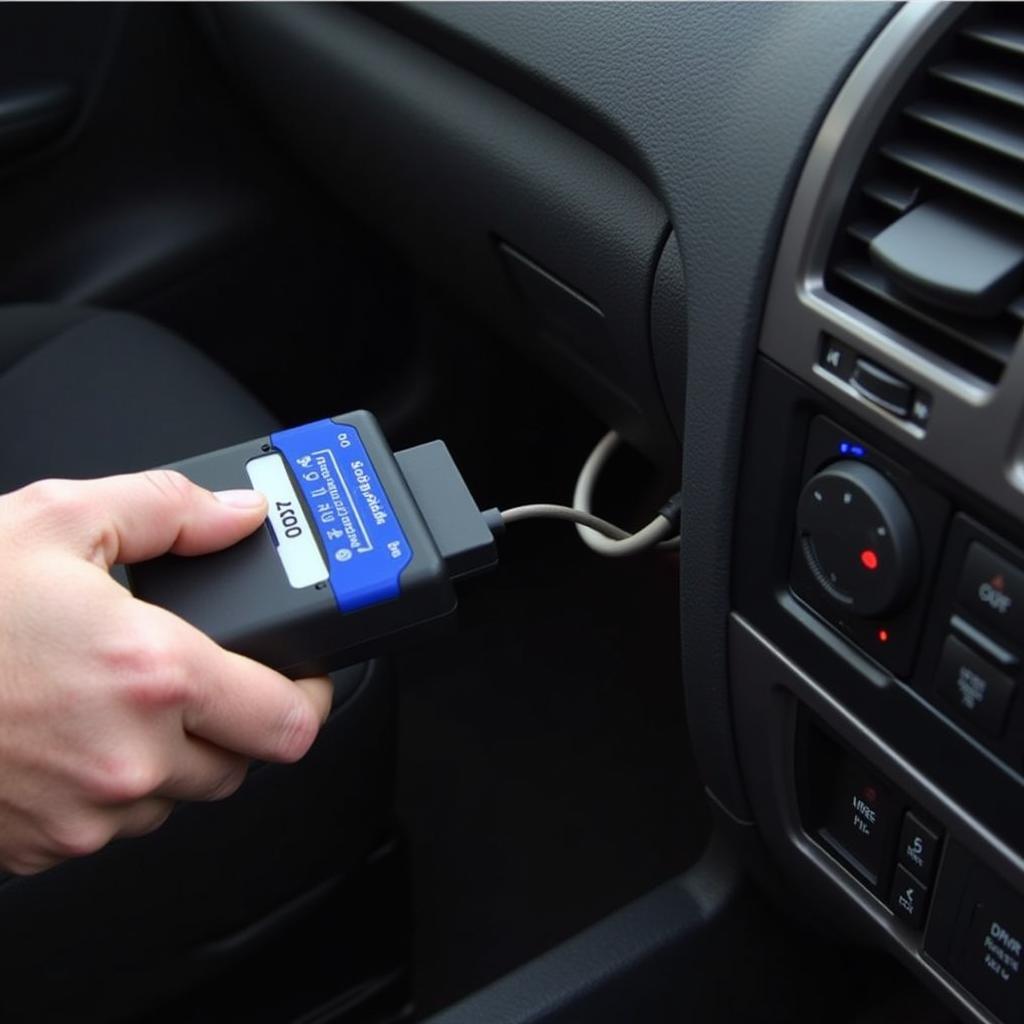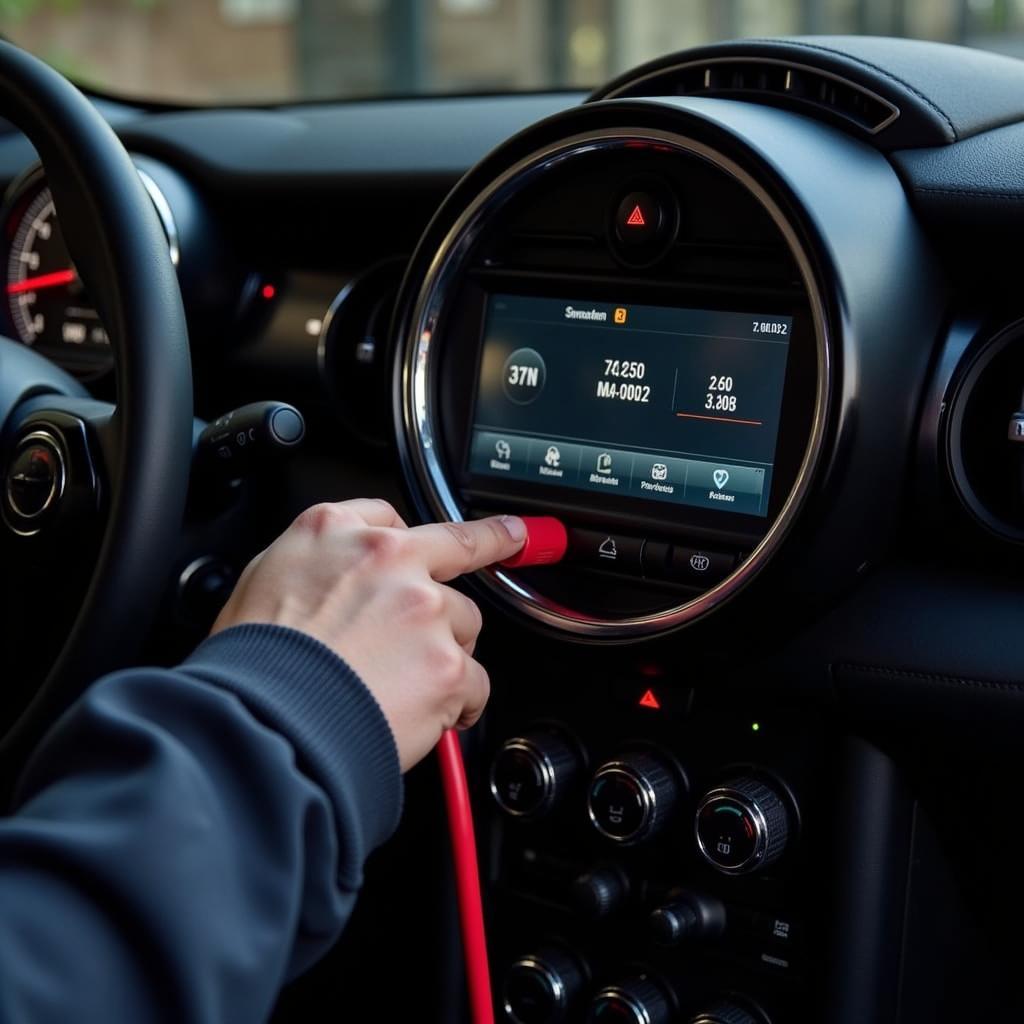An All Systems Scan Tool is no longer a luxury but a necessity for modern automotive repair. Whether you’re a professional mechanic, a DIY enthusiast, or a shop owner, understanding how to effectively use an all systems scan tool can save you time, money, and frustration. These powerful diagnostic tools provide a window into the complex electronic systems of today’s vehicles, enabling you to pinpoint issues with precision and confidence.
Similar to hd truck scan tools, an all systems scan tool offers a comprehensive approach to vehicle diagnostics. Gone are the days of relying solely on traditional methods, such as checking fuses and using multimeters. While these tools still have their place, an all systems scan tool opens a new level of diagnostic capability, allowing you to delve deep into the inner workings of a vehicle’s electronic control units (ECUs). From engine performance to transmission shifting, ABS braking to airbag systems, an all systems scan tool empowers you to diagnose and troubleshoot a wide range of automotive issues.
Why Choose an All Systems Scan Tool?
What advantages does an all systems scan tool offer over code readers or other diagnostic devices? Simply put, it’s the depth and breadth of its capabilities. A basic code reader can retrieve diagnostic trouble codes (DTCs), but an all systems scan tool goes further. It provides access to live data streams, allowing you to monitor real-time sensor readings and observe system behavior as you diagnose a problem. This real-time insight is invaluable for identifying intermittent issues or verifying repairs.
Furthermore, an all systems scan tool can often perform advanced functions, such as bi-directional controls. This feature allows you to command actuators, such as fuel injectors or solenoids, to test their functionality. Bi-directional control is particularly useful for isolating faulty components and confirming repairs without having to resort to guesswork.
Understanding the Different Types of All Systems Scan Tools
Navigating the market for all systems scan tools can be daunting. There’s a wide range of options available, each with its own set of features, capabilities, and price points. From entry-level models suitable for DIYers to professional-grade tools designed for experienced technicians, there’s a scan tool to fit every need and budget.
Entry-Level Scan Tools
These tools are ideal for car enthusiasts and home mechanics. They offer essential diagnostic functions, such as reading and clearing DTCs, viewing live data streams, and performing basic system tests. While they may not have all the bells and whistles of high-end models, entry-level tools are a cost-effective way to gain access to the diagnostic power of an all systems scan tool.
Professional-Grade Scan Tools
Designed for professional mechanics and automotive repair shops, these tools offer advanced features and extensive vehicle coverage. They often include functionalities like bi-directional control, advanced coding and programming capabilities, and access to manufacturer-specific diagnostic information. The investment in a professional-grade tool can pay off quickly through increased efficiency and improved diagnostic accuracy.
This is comparable to the functionality of the android based gm tech 2 scan tool, providing specific diagnostic capabilities for a particular vehicle make. Professional-grade scan tools offer a significant advantage in tackling complex automotive problems efficiently.
How to Use an All Systems Scan Tool Effectively
Once you’ve chosen the right all systems scan tool, learning how to use it effectively is crucial. Start by familiarizing yourself with the tool’s interface and navigation. Most tools feature a user-friendly menu system that allows you to quickly access different functions.
Connecting to the Vehicle
Locate the vehicle’s OBD-II port, usually situated under the dashboard on the driver’s side. Connect the scan tool to the port using the provided cable. Turn the vehicle’s ignition to the “on” position without starting the engine. This will power up the scan tool and allow it to communicate with the vehicle’s ECUs.
Retrieving Diagnostic Trouble Codes (DTCs)
Select the “Read Codes” function on the scan tool. The tool will scan the vehicle’s systems for any stored DTCs. Once the scan is complete, a list of codes will be displayed. Note down the codes and their descriptions for further investigation. Similar information can be found when searching for a best scan tool for f150, demonstrating the tailored diagnostic options available for different vehicles.
Viewing Live Data
Access the “Live Data” function to monitor real-time sensor readings. This allows you to observe how different systems are performing and identify any anomalies. Live data is invaluable for diagnosing intermittent problems and verifying repairs.
Performing Advanced Functions
Depending on the capabilities of your scan tool, you may be able to access advanced functions such as bi-directional control, coding, and programming. These functions require a deeper understanding of automotive systems and should be used with caution.
Conclusion
An all systems scan tool is a powerful asset for anyone involved in automotive repair. It empowers you to diagnose and troubleshoot a wide range of issues with precision and efficiency. From reading DTCs to viewing live data and performing advanced functions, an all systems scan tool provides a comprehensive approach to vehicle diagnostics. Investing in the right scan tool and learning how to use it effectively can significantly improve your diagnostic skills and save you time and money in the long run. For further assistance or information, connect with ScanToolUS at +1 (641) 206-8880 or visit our office at 1615 S Laramie Ave, Cicero, IL 60804, USA.
Similar to accessing genisys scan tool software, the software driving all systems scan tools plays a key role in their performance. Utilizing a robust and up-to-date software solution is critical for effective diagnostics.
(https://scantoolus.com/motorcycle-scanning-tool/).]
FAQ
-
What is an all systems scan tool? An all systems scan tool is a diagnostic device that can access and communicate with the various electronic control units (ECUs) in a vehicle.
-
What are the benefits of using an all systems scan tool? It allows you to read and clear DTCs, view live data, perform system tests, and even control certain actuators.
-
What types of all systems scan tools are available? There are entry-level tools for DIYers and professional-grade tools for experienced technicians.
-
How do I choose the right scan tool? Consider your budget, the types of vehicles you work on, and the features you need.
-
How do I connect a scan tool to a vehicle? Locate the OBD-II port and connect the tool using the provided cable.
-
How do I read DTCs? Select the “Read Codes” function on the scan tool.
-
What is live data? Live data shows real-time sensor readings, allowing you to observe system behavior.


